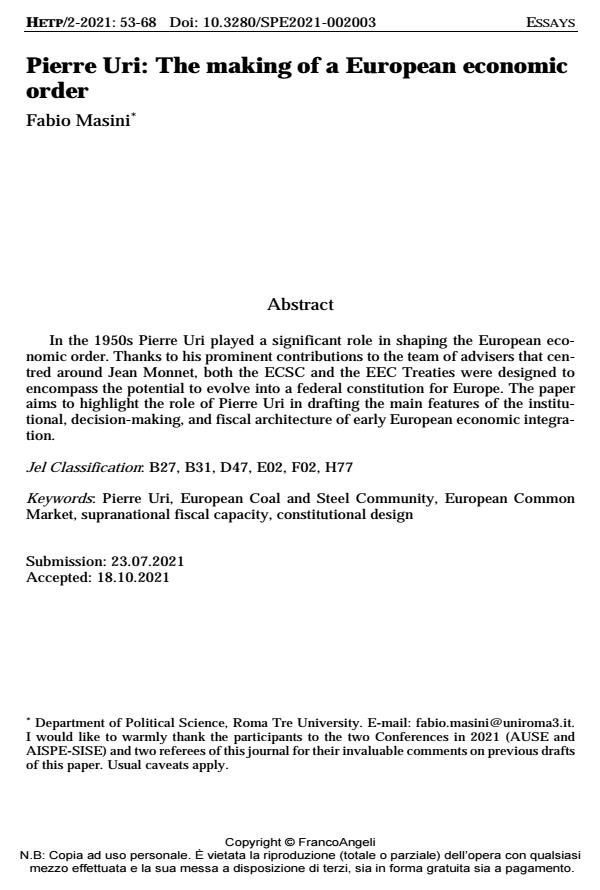Pierre Uri: The making of a European economic order
Journal title HISTORY OF ECONOMIC THOUGHT AND POLICY
Author/s Fabio Masini
Publishing Year 2022 Issue 2021/2
Language English Pages 16 P. 53-78 File size 65 KB
DOI 10.3280/SPE2021-002003
DOI is like a bar code for intellectual property: to have more infomation
click here
Below, you can see the article first page
If you want to buy this article in PDF format, you can do it, following the instructions to buy download credits

FrancoAngeli is member of Publishers International Linking Association, Inc (PILA), a not-for-profit association which run the CrossRef service enabling links to and from online scholarly content.
In the 1950s Pierre Uri played a significant role in shaping the European eco-nomic order. Thanks to his prominent contributions to the team of advisers that centred around Jean Monnet, both the ECSC and the EEC Treaties were designed to encompass the potential to evolve into a federal constitution for Europe. The paper aims to highlight the role of Pierre Uri in drafting the main features of the institutional, decision-making, and fiscal architecture of early European economic integration.
Keywords: Pierre Uri, European Coal and Steel Community, European Common Market, su-pranational fiscal capacity, constitutional design
Jel codes: B27, B31, D47, E02, F02, H77
- Italy, 1982: the case for Ecu-denominated Treasury bonds Fabio Masini, Albertina Nania, in The European Journal of the History of Economic Thought /2024 pp.468
DOI: 10.1080/09672567.2024.2329053
Fabio Masini, Pierre Uri: The making of a European economic order in "HISTORY OF ECONOMIC THOUGHT AND POLICY" 2/2021, pp 53-78, DOI: 10.3280/SPE2021-002003